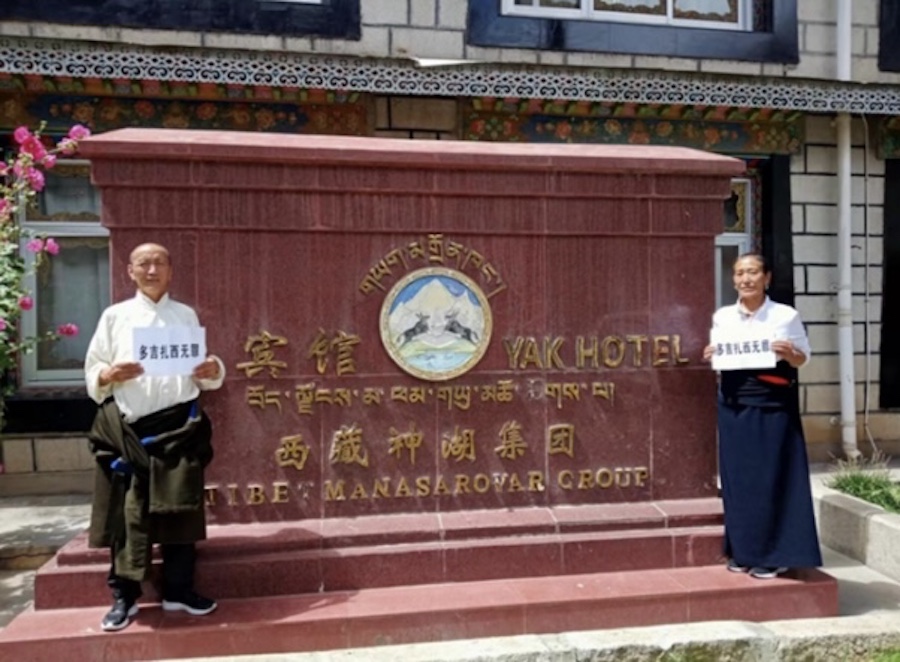On July 6, Nathu La, the only road link between India and China, will open for business. Analyst Shrikant Kondapalli looks at the implications of Puncturing the Himalayas.
When Chinese warlord Zhao Erfeng from neighbouring Sichuan Province tried to incorporate five Himalayan kingdoms (Tibet, Nepal, Bhutan, Sikkim and Ladakh) in 1910, little did he realise the implausibility of such a venture through brute military force. The British Indian government — with Younghusband’s forays into Tibet in 1903 through Jelep La — proved to be equally shaky except for the trade routes they built through Nathu La that connected Lhasa with Calcutta (now Kolkata). Nearly a century later, the successor states, India and China, are charting out plans to trade through the same routes.
An overwhelming portion of traditional trade passed through Nathu La till the early 20th century — supplying foodstuff and construction materials from India to Tibet while importing wool, silk and other raw materials. This has increased with the Chinese military’s entry into Tibet. To feed the increasing numbers of Chinese military personnel, Lhasa has to import food items from different parts of the country and outside.
Even in 1962, as Sikkim had not joined the Indian Union yet, Chinese activity was considered to be high. Border clashes elsewhere between China and India destabilized contacts — including trade between the two regions. Indeed, given political vagaries, scores of traders in Sikkim lost their livelihood, including their bank transactions and savings deposited across the border.
The 1962 border clash between India and China put an end to the trade and fortunes of frontier peoples. In fact, the region was almost sealed off for several decades. Offensive Chinese radio broadcasts in the bordering areas, such as across Nathu La from July 1966, escalating to clashes in 1967, meant further freezing of any contacts. Sikkim’s decision to join the Indian Union in 1975 became an eyesore to China which till 2003 continued to accuse India of “illegally occupying” Sikkim.
With normalisation of India-China relations, came the proposal in March 1994 to hold border meetings at Nathu La. Gradually other events followed. On November 21, 1999, a telephone link was established in Sikkim sector between Yatung garrison in Tibet and the 17th Mountain Division of the Indian Army to keep each other informed of activities along the border and “defuse border tensions”.
On April 1, 2000, a commemorative border meeting took place between Nathu La Brigade of India and Yatung garrison of the Chinese army.
Trade soon became a major driver in Indo-China relations. In mid-2000 India suggested that trade points -� nearly 12 — should be opened on both sides of the border. While border trade points through Lipulekh and Shipki La were opened by the 1993 joint working group meeting, Nathu La soon attracted the attention of both countries. With the Vajpayee-Wen Jiabao agreement in June 2003 on opening up of the pass in Sikkim with Changgu as the trading port and Renqinggang of Tibet, border trade is expected to go up.
It is estimated that overall border trade is only about $100 million while overall trade in 2005 reached more than $18 billion, indicating the miniscule portion of the border trade in overall trade figures. Of course, illegal border trade is estimated at as high as $1 billion. Dumchile in Ladakh, for instance, is a smuggler’s haven.
Several surveys were made on the border trade potential between the two countries and the benefits thereof. Wide differences exist on the nature of such estimates. Border trade through Nathu La is expected to increase from $40 million by the end of 2006 to an estimated $2 billion in the next 10 years. Sikkim’s traders and the Bharat Chamber of Commerce at Kolkata are expected to reap rich harvest in the coming years, although Nepal and Bhutan may see their trade figures dwindling if the Nathu La trade prospers.
Both countries — close to India — have expressed concern in this regard. For the indigenous Bhutias and Lepchas — who demonstrated in New Delhi a few years ago against opening up of their natural habitats — Nathu La trade may drastically affect their lives and environment in the coming years. Opening up of Nathu La may also see a major influx of peoples from across the border.
Nathu La was to be opened up for trade on October 2, 2005, but postponed on Chinese request. On June 18, 2006, at Lhasa, a six-member Indian delegation agreed with the chairman of the Tibetan Autonomous Region government that Nathu La should be opened for trading from July 6.
It appeared that the Chinese side wanted to complete the Golmud to Lhasa railway line and other over- and under-ground defence networks before Nathu La can be used for trading. China has constructed a 6400 square metre market at Dongqinggang, about 16 km from Nathu La. On the Indian side, a trade mart at Sherathang (nearly seven km from Nathu La) was constructed. Prior to this, India estimated that it needs to spend Rs 2,122 crores for infrastructure building at Nathu La. A mock trading session was carried out by India at Nathu La in April to test various parameters including infrastructure facilities, customs, banking, accommodation and security.
China has shown a keen interest in Tibetan trade with India through Nathu La. In its 10th Five Year Plan (2001-2005) it has launched a Western Development Campaign of constructing infrastructure projects in its western regions including those bordering India with Tibet, Sichuan and Yunnan. Specifically, China has spent enormous amounts on constructing roads, railways, airfields and placing fibre optics in Tibet.
Chinese Ambassador Sun Yuxi suggested earlier this year that the Tibetan railway, to be operational later this year, could be extended to Nathu La. With these, China intends to connect its land-locked western region with seaports such as Kolkata, Haldia or Chittagong. As current trading through Myanmar is nearly five times the distance of the Nathu La route, transportation costs would be obviously lower in the latter case. For perennially food-deficient Tibet, north Indian plains could provide rice, wheat and other raw materials.
Strategically, the Peoples Liberation Army — one of the dominant players in the Chinese decision-making process towards this region — may have eyes for the vulnerable Siliguri corridor connecting north India with its northeast. It may not be out of context to point out that when India requested for troop passage routes to its northeast via Bangladesh, President Ershad in a statement in Beijing refused to entertain such request. Besides, as no progress has been achieved on either a nuclear No First Use agreement or “de-targeting” of missiles in Qinghai-Tibet-Yunnan regions, India needs to be on guard.
Given the expansive Chinese infrastructure development programmes in Tibet and border domination efforts, India appears to have woken up belatedly. Although it announced a programme in 1997 for constructing roads in the border areas, progress in this regard is tardy. A plan was announced in March 2006 to build nearly 600 km of road costing about Rs 900 crores and connecting the border areas in five Indian states. But progress on the ground appears to be tardy.
In these circumstances, India needs to weigh carefully whether increase in trade enhances or restricts its political and strategic choices for the coming decades.









